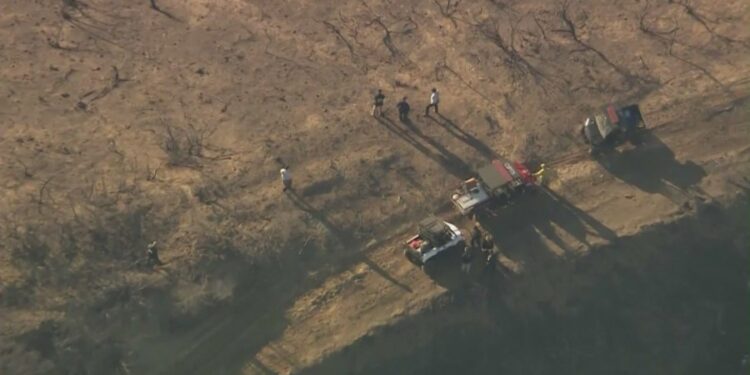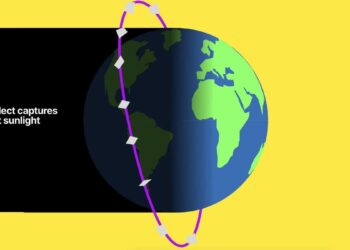For the first time, KTLA cameras are able to show you what may be the closest look yet at the origins of the deadly Palisades Fire.
KTLA hiked into the hills above the Highlands neighborhood of Pacific Palisades and found a blackened slope dotted with orange ribbons used by the ATF to process fire investigation scenes. It’s just off a popular hiking trail that offers sweeping views of the Pacific Ocean.

The Palisades Fire killed 12 people, flattened more than 6,800 structures and charred more than 23,000 acres, according to Cal Fire.
The ATF confirmed to KTLA 5 that agents with its elite “National Response Team” are working 250 leads and scouring through more than 90 hours of video and audio.
Determining the cause could take months, but early evidence suggests the Palisades Fire erupted at or near the site of a smaller fire six days earlier, overnight on New Year’s Eve.
KTLA used satellite imagery to identify the burn scar from that earlier fire, known as the Lachman Fire. In another image, taken about six hours into the Palisades firefight on Jan. 7, you can see smoke billowing from the very same area.

The Lachman Fire scorched eight acres as firefighters attacked the blaze with water-dropping helicopters and ground crews. People living in the area tell KTLA 5 they believe the Lachman fire was started by fireworks.
“I heard a loud bang and saw a white flash to my backside,” Ari Sallus tells KTLA 5 of what he heard and saw that early morning. “Someone lit fireworks and it started a fire.”
Fire crews racing to the scene on Jan. 7 also noted the proximity of the new fire to the New Year’s Eve blaze.
“The foot of the fire started real close to where the last fire was on New Year’s Eve,” one firefighter said.
Another said, “We’re going back up where the Lachman fire was.”
The overlapping fires raise the possibility that the New Year’s Eve fire was reignited six days later as howling winds tore across Southern California on Jan. 7.
“Fire can get deep seated into tree trunks and into the root systems of big trees and smolder underground for days, weeks and months,” said retired LAFD arson investigator Ed Nordskog, who worked more than 2100 fires in his lengthy career.
“That the original fire rekindled or restarted on fire up to six, seven days later, some people have scoffed at that notion, but that is an entirely credible and possible phenomena,” Nordskog added.

The L.A. Fire Department declined to answer KTLA’s questions about the Lachman fire on New Year’s Eve and the department’s protocol for monitoring past fires for potential flare-ups.
In the days after the Palisades fire, an LAFD spokesperson was quoted as saying it was not their practice to maintain patrols of past fire sites even for a few days after fires had gone cold.
But at a community forum in the Palisades two weeks ago, LAFD Chief Kristin Crowley assured the crowd that she “can look you in the eye and tell you that full disclosure, if that indeed is what they find out, we will tell you that.”
Assistant Chief Joe Everett told community members that his team did what they call a “cold trailing operation well into the next day” and patrolled the site for at least 36 hours.
“That fire was dead,” Assistant Chief Everett said. “If it is determined that was the cause, it would be a phenomenon.”







